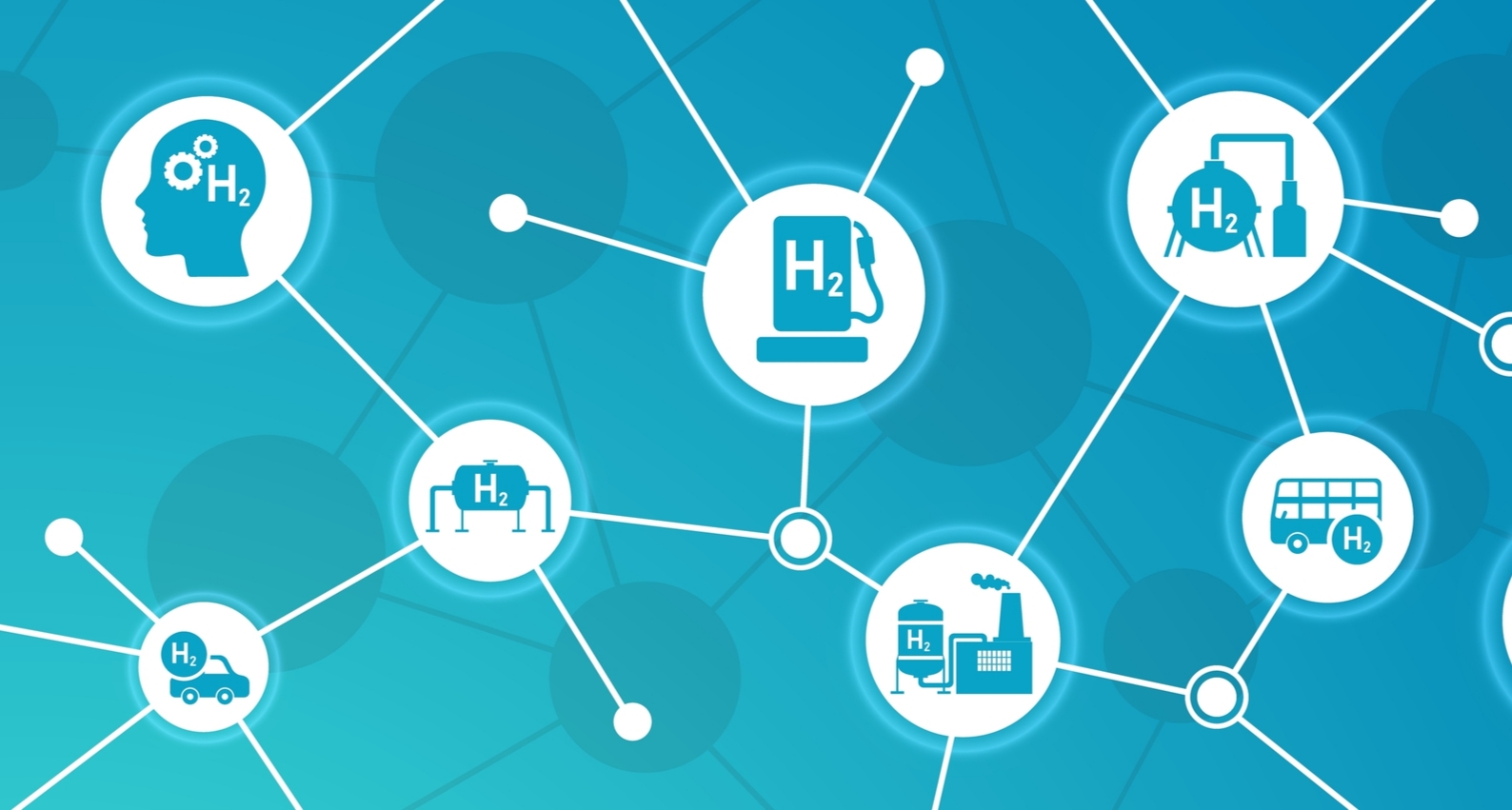Hydrogen Economy – Prospects and Challenges
Published on 18 Feb, 2022

Climate change is a reality, necessitating the quick adoption of low carbon and renewable sources of energy. Hydrogen is one such source of clean energy which has the potential to transform industries. Various technologies are currently being researched or have been developed to facilitate its wide-scale adoption. While there are certain challenges in its adoption, the gas is certainly needed to achieve clean energy.
Countries across the globe have taken the pledge to reduce their carbon footprint and achieve net-zero emission. To achieve this goal, they are looking at alternative and sustainable energy sources. Hydrogen is the frontrunner in this race.
Types of hydrogen
The three main sub-types of hydrogen are:
Green hydrogen – It is generated from hydrocarbon-free renewable resources or via processes which do not use fossil fuels, such as electrolysis of water. It has very low carbon emissions.
Gray hydrogen – It is generated from hydrocarbon sources and produces significant carbon emissions. Currently, it is the most produced form of hydrogen globally.
Blue hydrogen – It is generated from captured or utilized carbon emissions.
Hydrogen has always been a source of energy—it was used to power the first internal combustion engine. Since it is light and produces no direct pollutants or greenhouse gases (GHGs), it can help in the transition to clean energy, and thereby, contribute to the decarbonization of sectors. There are many other advantages of moving toward a hydrogen economy.
Benefits of hydrogen:
- Versatile – Hydrogen can be produced from a wide variety of fuels. It is easy to store and transport. It has a range of uses and can be transformed into methane or electricity for power generation. It can also act as a fuel for cars, trucks, ships, and planes.
- Integrity Applications – Hydrogen can help in increasing the variable output from renewables such as solar and wind photovoltaics (PV). Furthermore, hydrogen and hydrogen-based fuels can enable easy transportation of energy from regions with abundant solar and wind resources.
- Wide application – Hydrogen is not used in energy-intensive sectors like transport, construction, and power generation. Given its suitability for these types of activities, there is ample scope for increasing its usage in these sectors which can significantly reduce overall carbon emissions.
Companies across the world are looking at alternate sources of energy to implement their decarbonization strategy. Governments are supporting this initiative by providing incentives and making favorable policies. It is the right time to invest in hydrogen which will boost industrial and technological development as well as create new skilled jobs.
Fuel cell technology
An emerging technology, fuel cells combine hydrogen and oxygen to create heat, water, and electricity. The various types of fuel cells are:
- Proton exchange membrane fuel cell (PEMFC) – PEMFC is used for automobiles and portable power. It operates at around 80°C and has 60% efficiency. The main inputs are hydrogen and oxygen, and the cell has a power capacity in the range of 5–200 kW. It is small but high in performance.
- Direct methanol fuel cell (DMFC) - Research is on for developing DMFC, which will use methanol as a fuel by converting it into hydrogen. As methanol serves as a safe source for the storage and transportation of hydrogen, it is a desirable innovation. DMFC will also be used in the transportation industry.
- Alkaline fuel cell (AFC) – With a power generation efficiency of almost 70%, AFC uses potassium hydroxide as the electrolyte. It operates on pure hydrogen and oxygen, as potassium hydroxide is susceptible to carbon contamination. One of its applications was in the Apollo spacecraft where it was used to provide electricity and drinking water.
- Solid oxide fuel cells – With a hard, non-porous ceramic compound being used as an electrolyte, these fuel cells operate at a very high temperature range. They are ideal not only for stationary applications but also auxiliary power units (APUs) to power electronics-based components used in vehicles.
Challenges
However, there are certain challenges hindering the progress of the hydrogen economy:
- Process – At present, most of the hydrogen is produced by burning fossil fuels, which increases carbon emissions, defeating its core purpose. Unless there are technological developments to capture and utilize the carbon emissions, it will be difficult to achieve clean energy.
- Cost – Production of green and blue hydrogen requires huge initial investments. Furthermore, due to production not happening on a largescale, companies do not have the advantage of economies of scale. However, by investing in right technologies, this cost can be reduced significantly.
- Policies – Government support is imperative for the successful adoption of hydrogen economy. However, stringent regulations in some countries pose a challenge to the successful adoption of this economy and deter investments.
- International cooperation – The hydrogen economy can be leveraged only if there is international cooperation to facilitate its growth.
Political as well as business support for hydrogen is at an all-time high currently, with several policies and projects directed at expanding its usage globally. This is the time to scale up technologies to bring down costs and increase its adoption. Switching to hydrogen can help achieve the net-zero emission target and control the damage caused by climate change.

